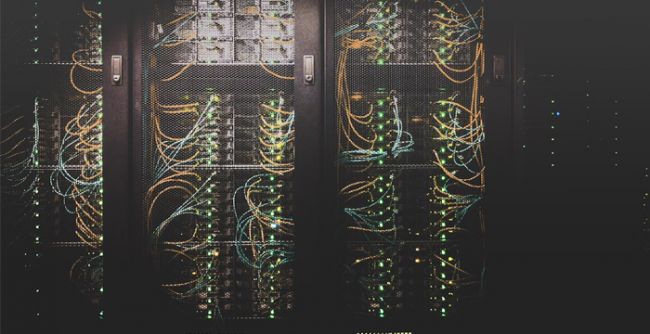Technology
5 min read
How Advanced Technology Solutions Can Future-Proof Your Business


Businesses face mounting pressure to process vast amounts of data while maintaining fast, reliable connections across their operations. Sustainable development in a data-driven economy depends on modern artificial intelligence technologies and sophisticated network infrastructure. These tools enable companies to automate menial chores, keep safe, high-speed communications, and make better choices..
AI tools and strong network solutions combined provide a technical basis for company expansion. Companies that integrate these technologies gain the ability to adapt quickly to market changes while maintaining the speed and security needed for long-term success.
AI technology transforms raw business data into actionable insights that drive better decisions. Machine learning models spot patterns in customer behavior, supply chain operations, and market trends that humans might miss. A meta-analysis study by Deloitte shows that AI applications impact four key business areas: operational streamlining, data analysis, customer personalization, and product innovation. These improvements help companies adapt and grow while reducing operational costs.
Implementation success depends on choosing the right AI tools for specific business challenges. Companies that start with clear goals and measurable outcomes build more effective AI systems. By focusing on practical applications rather than trying to automate everything at once, organizations develop AI expertise while delivering tangible business value.

AI systems excel at finding meaningful patterns in business data. These tools process information from sales, customer service, and operations to spot trends and suggest improvements. Data science and AI applications work together to turn business information into practical strategies that drive real results. Companies use these insights to adjust inventory levels, optimize pricing, and predict maintenance needs before equipment fails.
Modern AI automation tools handle routine tasks while providing valuable insights about business processes. This automation lets personnel focus on strategic planning and innovative problem-solving. By tracking procedures and alerting to possible problems early, AI systems help keep quality constant across businesses.
High-speed, secure connections with multilevel network security form the backbone of modern business operations. Without compromising security or speed, dark fiber networks offer committed bandwidth that grows with corporate demands. With direct control over network infrastructure, these private fiber optic lines let companies customize their connectivity as requirements change.
Modern networks require multiple connection types working together to support diverse business needs. From cloud services to local data processing, each part of a business network serves specific purposes. Organizations need reliable primary connections, redundant backup systems, and the ability to route traffic efficiently across their entire network structure.
Dark fiber networks provide distinct advantages for businesses that need reliable, high-speed connections. Private fiber lines enhance data security and lower network congestion and latency. This committed infrastructure enables secure communications across several sites, real-time apps, and big-data transfers.
Smart network architecture combines multiple connection types and backup systems to support business expansion. As operations expand, hybrid cloud configurations, dispersed data centers, and edge computing sites give flexibility. Enterprise edge computing investments have been consistently increasing recently, according to Deloitte, underlining the move toward distributed network designs. Frequent network evaluations help companies find possible bottlenecks before they affect performance, therefore allowing businesses to strategically rather than reactively plan upgrades.
The true potential of AI and advanced networking emerges when businesses integrate these technologies effectively. Fast, reliable networks ensure AI systems can access and process data quickly. This combination supports real-time decision making and automated responses to changing business conditions.
Technical integration lets businesses create feedback loops between their AI systems and network infrastructure. AI tools monitor network health and automatically adjust data routing for optimal performance, while robust networks enable AI models to train on larger datasets across multiple locations. This symbiotic relationship strengthens both systems while reducing technical overhead.
Manufacturing companies use AI-powered quality control systems that rely on high-speed networks to process camera feeds in real time. Financial services firms combine AI trading algorithms with ultra-low latency connections to execute transactions quickly. AI-powered chatbots handle customer service requests while maintaining secure access to customer data through private networks.
Success with advanced technology requires careful planning and integration. Most businesses benefit when they make sure their network infrastructure can support these systems and match AI features to their particular requirements. Regular testing and revisions help preserve peak performance as technology and business needs change.
Success with modern technology calls for careful preparation and a thorough knowledge of corporate objectives. Start by mapping current technical capabilities against future needs. Choose specific areas where AI or network improvements could solve existing problems or create new opportunities. Regular evaluation of both systems and performance helps identify successes and weak areas, letting organizations build more sustainable technical capabilities while managing risks and costs effectively.
Be the first to post comment!